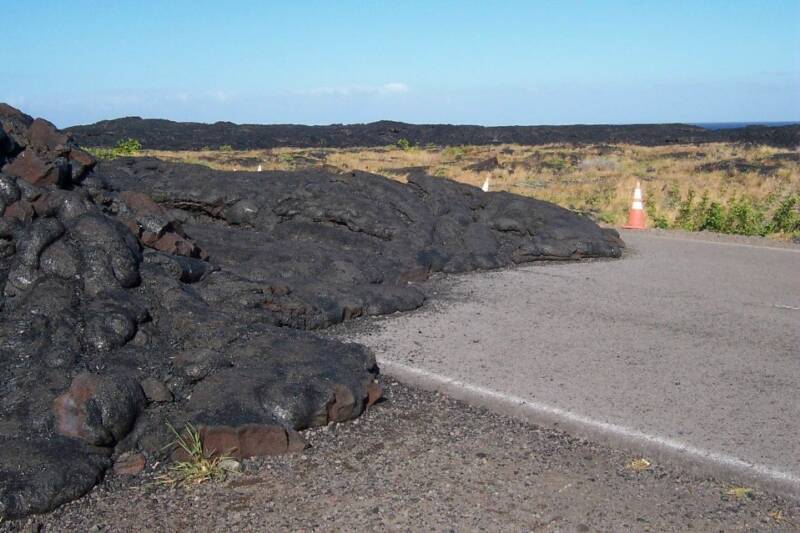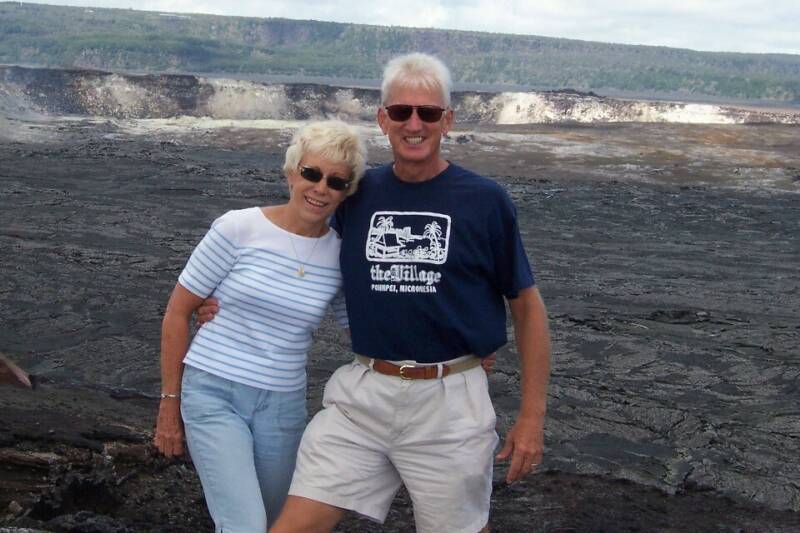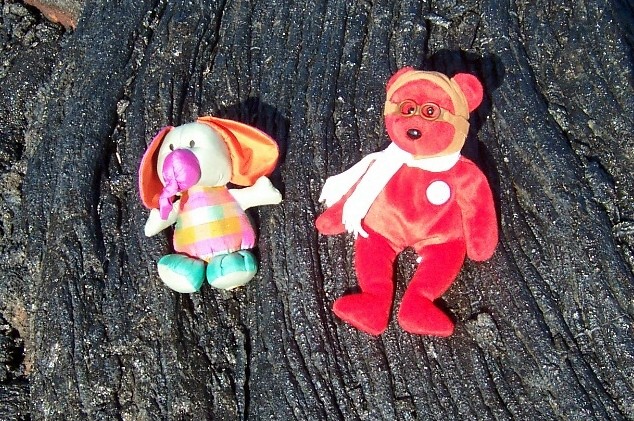At 199 miles, this was to be the shortest of all the legs. Nonetheless, it was quite a picturesque and enjoyable flight. Honolulu is on the island of Oahu and our route took us a little south of all of the other islands with beautifully sounding names--Molokai, Lanai, Maui and Kahoolawe--to the big island of Hawaii. It is called the big island to distinguish it from the state of Hawaii. It also was given that name because it is big! It is more than twice as large as all of the others combined.
All of the Hawaiian Islands were originally formed by volcanos. They built up land mass below the ocean floor for jillions of years, finally broke through the surface, and eventually created the paradise of today. However, they did not stop there. More than 15,000 acres of new land has been added to the big island alone over the past century.
There is still a very active volcano only 30 miles from Hilo. Its most recent eruption began in 1983 and it still spews a considerable amount of new lava every day. You can drive around the rim of the volcano while the red hot molten lava flows from a rift farther down its side. It consumes homes, trees and anything else in its path on its way to the sea. It is said that one should buy land because they are not making any more of it. That is not true in Hawaii.
Hilo is the closest Hawaiian city to California. That is why it was chosen as our departure point. It is known as the garden city and, as the name implies, there are beautiful flowers everywhere. It is an older city with buildings dating back to the late 1800s. Most of the older ones have been totally renovated and turned into quaint downtown restaurants and shops. There are rain forests and many waterfalls a short drive to the north. Throw in a very rocky Pacific coastline with huge cliffs and crashing surf and you have some seriously spectacular scenery.
We waited until the later hours of the day for lower temperatures to fuel the Baron. Gasoline contracts considerably as it cools and thus allows a greater amount of fuel in the tanks. And more fuel is definitely needed for the big jump across the pond. It was a pleasant change to have the fuel pumped from a large truck instead of hand pumped from drums as in the other Pacific Islands. As usual, it was a challenge to put the last gallons into the internal auxiliary tanks. The trick was to put in the maximum amount possible without spilling any in the aircraft's interior. With the top of the tanks only 6 inches from the roof of the cabin, it was very difficult to determine when they were nearing full capacity. Once a measured amount of fuel was pumped in, we had to remove the hose quite often and check the level, first with a ruler and then, with our fingers. Frankly, we always chickened out before filling the tanks completely so we never actually had the very maximum fuel on board. With favorable winds projected for the next leg, however, we thought it probably would be enough.
One super-long leg over 2148 nautical miles of Pacific Ocean, with nowhere to land in between. This would most likely be the last major challenge to our trip around the world. The oil and filters were changed in the Baron as well as a few other items in preparation for the leg. The mechanic pronounced her ready to go. The Bearon and Miss Ellie were up for it as well. Every appropriate precaution had been taken and now it was time to make it happen!


